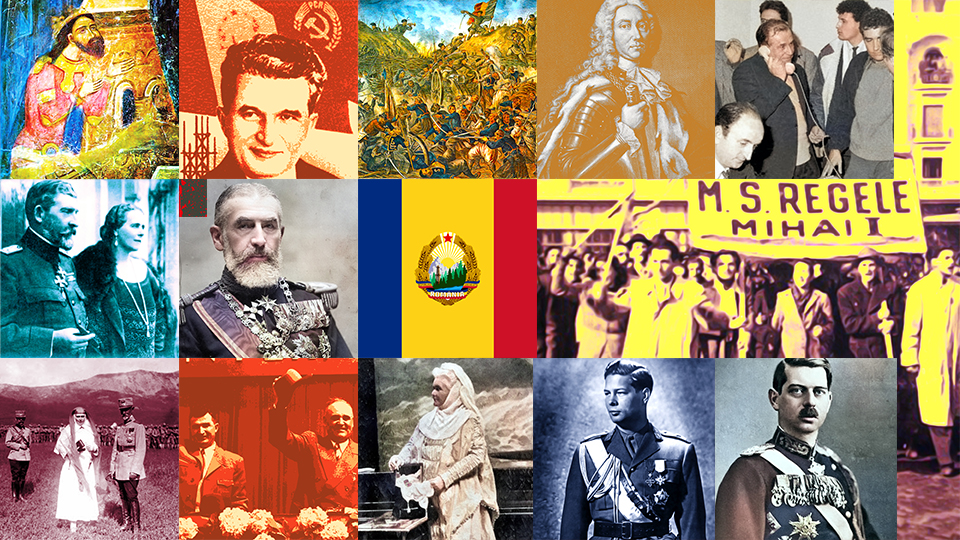The Most Favoured Nation Clause
Friendship between states is not just about fine words, but also about action

Steliu Lambru, 05.05.2025, 13:15
Friendship between states is not just about fine words, but also about action. One of the ways in which the Romanian-US friendship translated into action in the second half of the 20th Century was the most favoured nation clause. It is based on a principle with two components. The first component is equal treatment in trade relations given by one country to another. The second component is the favourable treatment in trade relations given by one country to another compared to the other countries with which it has trade relations.
Relations between Romania and the USA in the 20th Century were generally positive, except for the years 1941 and 1944 when the two were at war. After the end of the conflict, Romania and the USA found themselves in opposing sides: Romania was a prisoner in the socialist bloc commanded by the Soviet Union, while the US was the leader of the free world. The restoration of Romanian-US relations began tentatively in 1946, and they truly thawed after 1953, the year of Stalin’s death.
The historian Constantin Moraru, with the National Archives of Romania, researched the topic and told us on what the restoration of bilateral relations had been based:
Constantin Moraru: “Considering that in the Soviet Union a power struggle was taking place at the top of the Communist Party for two years, Romania was trying to take advantage of this war and took a number of steps to establish economic relations. Mainly, this step came as a result of the fact that the Eisenhower administration tried to change the views on East-West relations a little, especially in terms of economic relations. The Americans said that they could not start economic relations without resolving the issue of American nationalised claims on June 11, 1948. And then, in the period between 1954 and 1960, several rounds of negotiations followed. The amounts that were requested as compensation by the American side reached somewhere around 60 million US dollars, and the share of Romanian property that was blocked in the United States was somewhere around 20 million dollars.”
Between 1955 and 1960, increasingly firm attempts were made at economic rapprochement; in 1960, a financial agreement was even concluded in Washington to regulate mutual debts. Romania paid 22 million US dollars, with an instalment of 2.5 million US dollars to be paid over the next four years. Also, in 1960, a cultural agreement was concluded.
However, the building of the Berlin Wall in 1961, the Cuban missile crisis in 1962, and Romania’s political positioning alongside the Soviet Union led to a halt in bilateral relations. In 1964, after the declaration of independence of the Romanian Workers’ Party and with Romania distancing itself from the Soviet Union, Romanian-American relations were restored. This is when the idea of the most favoured nation clause appeared, but it was rejected by the US Congress, which had voted in 1949 a law that prohibited the USA from having trade relations with socialist Europe. Also in 1964, the Romanian legation in Washington was elevated to the rank of embassy.
Nicolae Ceaușescu’s coming to power in 1965 did not bring about major changes. However, Romanian technocrats convinced the new leader of the importance of obtaining the clause. Romania was getting closer to the US through its stance on the 1967 Six-Day War in the Middle East and the 1973 Yom Kippur War, when Romania did not embrace the Soviet position. In 1969, the US president Richard Nixon visited Romania, and in the early 1970s, Romania was the first socialist country to be admitted into international financial organisations such as the IMF, the IBRD and the GATT. On April 2, 1975, an agreement was signed in Washington under which the Romanians and the Americans offered each other the most favoured nation clause, a moment followed by the visit of the US president Gerald Ford to Bucharest.
The year 1975 is seen as the peak of Romanian-US bilateral relations. Constantin Moraru says that Romania’s entire behaviour led to the granting of the clause, but the lobby also played a role:
Constantin Moraru: “The US Jewish community also contributed to Romania getting the clause. The issue of Jewish emigration was important for the American Jewish community, which wanted members of this community to secure facilities with respect to emigration either to Israel or to the United States. They needed the Romanian authorities to be able to do this much easier. This fact contributed to obtaining the clause, the support, the lobby of the Jewish community in Congress led to Romania obtaining the clause.”
However, the economic crisis of the early 1980s led to tensions in the Romanian-American relations. Romania’s 11 billion dollar debt, the brutal violation of human rights in Romania and the objections of the Americans collided with Nicolae Ceaușescu’s stubbornness.
Constantin Moraru: “Romania was in economic difficulty regarding the matter of raw materials. Romania had a developed industry in several branches that required a lot of raw materials that the country could not meet domestically. To be able to buy from abroad, it needed money. Now, with a debt reaching that level, the American authorities said they could not help Romania until it devised a schedule for repaying this debt. In conjunction with the human rights breaches by Bucharest, the Romanian-US bilateral relations cooled down, culminating in 1988 with Romania renouncing the most favoured nation clause. Thus, by 1989, relations between the two countries were at a very low level.”
In 1996, following the progress made by Romania, the American Congress restored the most favoured nation clause, lost eight years earlier. (AMP)




























